What’s the first thing that comes to your mind while thinking about digital marketing?
Social media campaigns, newsletters, Google ads, or maybe SEO services. These are all important aspects of promoting your business online. Yet, one important element that often goes unnoticed is data analytics in digital marketing.
Your ads don’t just turn into clicks and conversions overnight. While going viral is still a thing, thorough planning, execution, and analysis are the building blocks of stable business growth.
But how to use analytics in marketing to reach the desired results?
What Is Data Analytics in Digital Marketing?
Data analytics is all about making sense of the numbers.
It’s collecting, processing, and interpreting data to make informed decisions for your marketing campaigns. When used right, data analytics can provide unique insights into areas like:
- The way customers interact with your brand.
- Advertising campaign optimization.
- Areas of your website that need improvement.
- Ways to optimize your marketing budget.
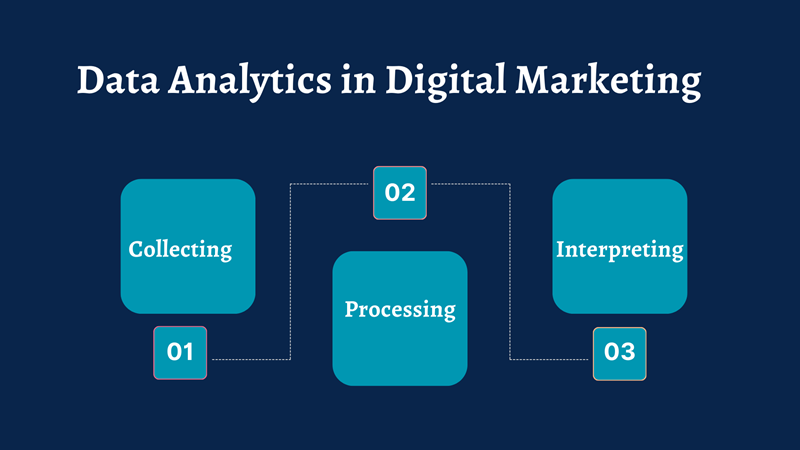
For example, analyzing audience performance data can show whether it’s the best time to post on social media or if your email campaigns are effective.
Relying on data from previous marketing campaigns and improving the upcoming ones based on the learnings is how you stay competitive in a crowded market.
Why Data Analytics Matters in Modern Marketing?
According to a 2023 survey, an impressive 92% of surveyed organizations delivered measurable business value thanks to data analytics. So, missing out on developing custom strategies based on your business-specific numbers is no longer acceptable.
Improved Targeting and Personalization
Data-driven marketing can help you adapt to your target audience’s needs and outrank the competition.
Suppose you run an eCommerce store specializing in athletic wear. If you start analyzing your marketing and sales data, you may learn that:
- Running shoes are your top-performing product during the summer season.
- A more detailed analysis can even show that your target consumers are 25-34-year-old people living in urban areas.
- They are most likely to convert after seeing an Instagram ad.
These insights can change everything. Instead of pouring your ad budget into general campaigns, you can improve your targeting strategies and create personalized ads featuring running shoes.
Data analytics in digital marketing removes all the guesswork and helps businesses make smarter decisions.

Enhanced Decision-Making and Strategy
Making data-based decisions in your marketing department can lead to significant cost savings. For example, if you are unsure whether to invest more resources into social media or search campaigns, data can show you the right way.
Suppose you discover that most of your customers come from Google searches, while social media attracts only window shoppers. With this insight, it’s clear that boosting your search ad budget will likely drive more meaningful results.
Working with the right data ensures that every business decision has a realistic backup.
Real-Time Campaign Optimization
Most platforms provide performance data from the first second of running a campaign, ad, or organic post. Real-time data can transform your marketing efforts into dynamic processes, providing insights for continuous improvements.
For instance, once you launch a Google Ads campaign, you can access real-time data on its performance. If the results are not satisfying midway, don’t wait until the end. Data analytics can help you identify the ads that are getting clicks with no conversions.
Instead of waiting weeks to figure out what went wrong (meanwhile wasting time and money), real-time numbers can show if you need to:
- Tweak ad copies
- Retardet the audience
- Optimize your landing pages
Real-time campaign optimization can keep you from wasting your budget and show ways to adapt the campaigns to what’s working at the moment.
How to Use Analytics in Marketing: Key Techniques
Launching a marketing campaign and crossing your fingers in the hope of the best is a normal state for some business owners. And it’s true. Sometimes, you can never know what works. Yet, despite how unpredictable marketing can be and how customers often surprise us, a data-driven approach boosts your chances of making the right moves and achieving more predictable results.
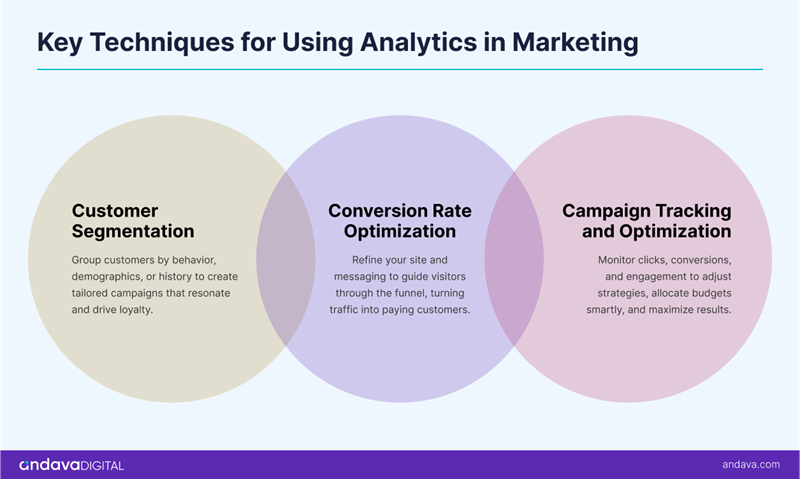
Customer Segmentation
Customers are different, so why would you market to them as if they are the same?
Customer segmentation suggests separating your target audience into groups based on their behaviors, demographics, or sometimes even purchase history.
Customer segmentation is a method of dividing customers into groups based on certain characteristics. Learn its benefits and how to create a strategy: https://t.co/BKIYWkCecC pic.twitter.com/gg9pDhkNwF
— TechTarget News (@TechTargetNews) September 2, 2024
Let’s see how this works on a specific example.
By analyzing user behavior visiting your online store, you can identify customer preferences and create highly targeted experiences for various segments:
- Loyal members
- Casual shoppers visiting once in a while
- Bargain hunters waiting for discounts
Take Amazon which uses customer insights to provide its Prime members exclusive deals and early access to sales. They also have shopping recommendations based on recent searches or seasons trends for the other two segments.

Such segmentation doesn’t just improve sales. It builds customer loyalty and grows your business authority.
Campaign Tracking and Optimization
Analytics tools and software can help you monitor KPIs like clicks, conversions, engagement, and bounce rates to reveal areas for improvement.
If you are running ads on social media, keeping an eye on numbers may show that your Instagram ads drive the most traffic, but Facebook ads are falling flat. This way, you can adjust your strategy and allocate more of your budget to Instagram or try a different ad format for Facebook.
Bigger players gain an advantage by constantly tracking and optimizing campaigns based on real statistics.
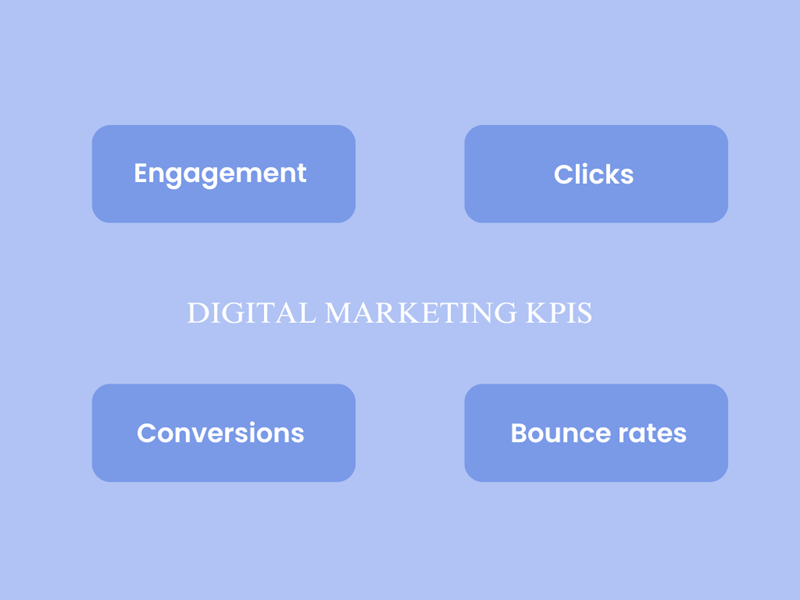
Conversion Rate Optimization
CRO is how you can turn casual website visitors into customers.
CRO means Conversion Rate Optimization? NAH! ❌
To me it means:
Cut, Reduce, OptimizeCut: Eliminate unnecessary or excessive elements.
Reduce: Scale down to the essentials.
Optimize: Refine what remains for maximum efficiency or performance.
Works. Every. Time.…
— Michal Malewicz (@michalmalewicz) December 23, 2024
You do that by optimizing your site for mobile, using high-quality images and easy-to-read fonts, providing clear calls to action to ensure every visitor navigates through the sales funnel and more!
But how do you know which tactics are going to capture your website visitors?
Customer segmentation, tracking, and optimization play a significant role in conversion rate optimization. Knowing what motivates each group, you can add specific trust signals and incentives to increase conversions.
Data Analytics in Marketing Examples
Do you know how the world’s largest companies consistently hit the mark with their marketing campaigns? Of course, there is a place for occasional mistakes. But with 3 in 5 organizations using data analytics to drive business innovation, it becomes clear that their success greatly depends on it.
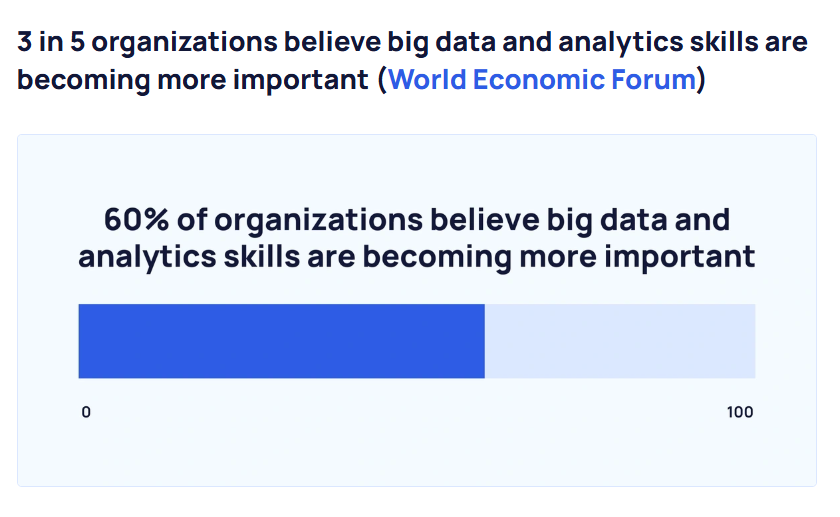
Social Media Analytics
Brands use cross-channel marketing to interact with customers, promote products, and build brand awareness. But it’s not only about posting content; social media analytics can provide valuable insights into audience preferences.
Here are a couple of real-world examples of how companies use certain KPIs to optimize their strategies:
Engagement Metrics
During its “Share a Coke” campaign, Coca-Cola monitored user-generated content and engagement metrics such as likes, shares, and comments to identify personalized labels.

Analyzing people’s behavior, Coca-Cola adjusted its campaign to focus more on the names and phrases that resonated most with its audience.
Audience Demographics
H&M uses social media data to track its followers based on age, gender, location, and interests. It mainly focuses on young people, but even among them, there are differences in preferred styles and trends.
For example, to promote winter coats, it chooses specifically colder climates, while for swimwear, it targets customers living in warmer countries.

Sentiment Analysis
Brands like Nike use sentiment analysis to study how people react to their campaigns. For example, when Nike launched the ad featuring Colin Kaepernick, it used sentiment analysis to track both the positive and negative reactions.
This helped it refine its messaging and understand how to create socially conscious campaigns.
Influencer Impact
Working with influencers can be challenging for brands. However, data analysis can help you find the right influencers to feature your products and later verify the impact of your collaboration.
That’s how the beauty retailer Sephora achieved a 1013% increase in ROI in 2023 by strategically partnering with micro and macro niche influencers and tracking data.
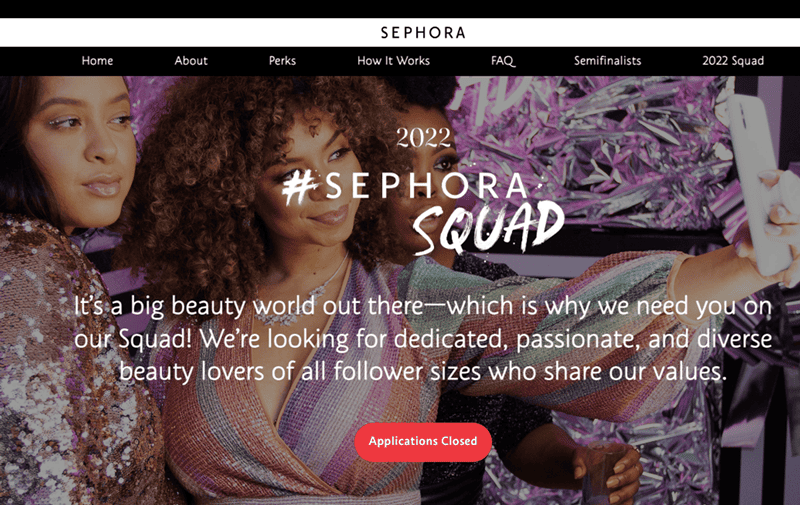
Email Marketing Metrics
There are several key metrics that companies can monitor to measure the success of their email marketing campaigns. Knowing what and how to analyze can significantly boost your strategy and make a space for improvements.
Here are a few email marketing metrics to consider:
Open Rates
This metric indicates the percentage of recipients who open your emails. Companies, including the eCommerce giant Amazon, use it to optimize email subject lines. For instance, they personalize subject lines with customer names or highlight limited-time deals, significantly boosting open rates. They’ve even seen an increase in open rates by 26%, which ultimately converts into more sales.
Click-Through Rates (CTR)
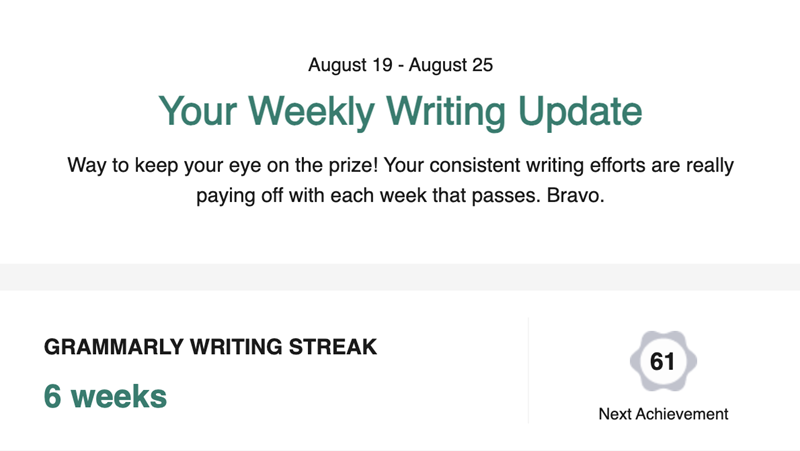
Grammarly uses CTR tracking to improve its email campaigns. It tests which email designs and CTAs resonate best with its audience. For example, adding “Your Weekly Writing Update” to its emails resulted in a noticeable increase in engagement.
Conversion Rates
Airbnb’s email marketing is known for its browser abandonment sequence. If a logged-in user starts browsing homes or destinations but doesn’t book, Airbnb uses browser cookies to match the session with their email address.
This triggers a personalized email reminding them of their search and encouraging them to complete their booking.
By analyzing conversion rates from these emails, Airbnb continuously refines its strategy to make them more effective and engaging.
Bounce Rates and Unsubscribe Rates
Looking at the data to understand why people stop receiving your promotion emails or unsubscribe from them can help a lot.
If a campaign shows higher-than-usual unsubscribes, you analyze the content to identify potential issues, such as overly frequent emails or irrelevant promotions.
For bounce rates, you may want to ensure your email lists stay clean by removing invalid addresses and using double opt-in methods for new subscribers.
Website and SEO Analytics
Constantly refining your website design and content, including SEO strategy, is important for driving traffic, improving user experience, and ultimately increasing conversions.
Your landing pages should be easy to navigate and have a clear call to action. This will help potential customers find your offerings more easily and encourage them to take action.
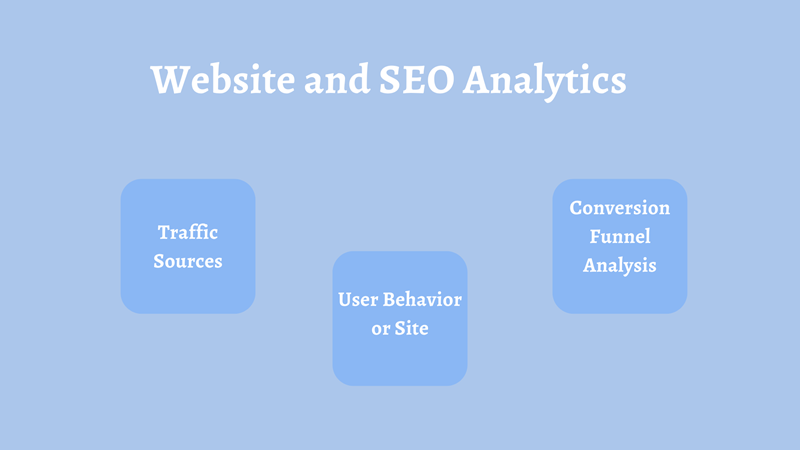
Traffic Sources
Do you have a customer journey mapped out?
If not, then it’s time you start thinking about it. You can study how others do this and find what’s working for your target audience.
For instance, Spotify has a detailed customer journey map that enhanced its music-sharing experiences and engagement from app entry to song sharing.
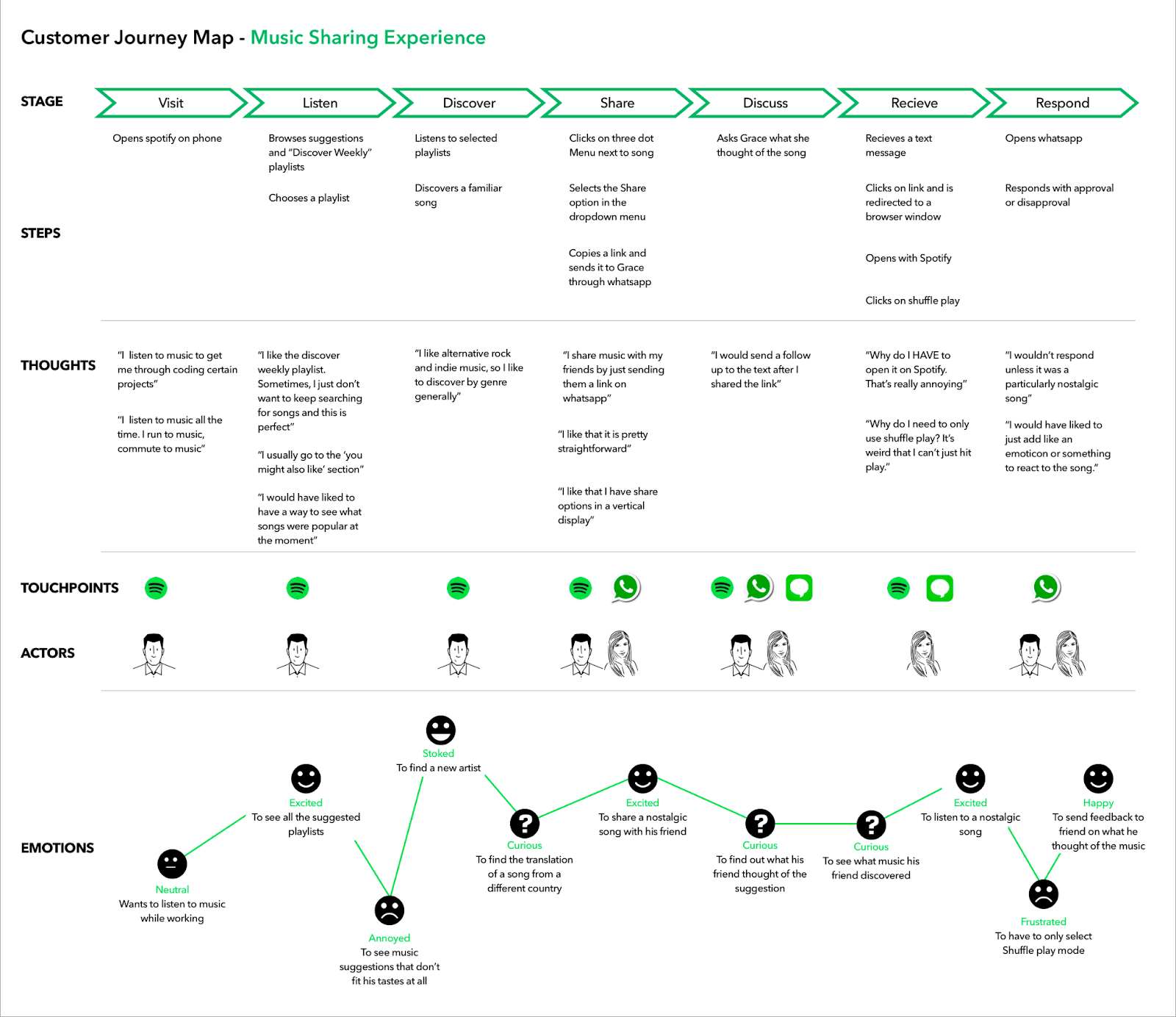
Yet, having access to information such as whether visitors are finding your website through organic search, social media, or paid ads, can assist with customer segmentation. This vital data analytics in marketing allows you to tailor your strategies and target specific audiences more effectively.
User Behavior or Site
Session duration and bounce rates (for websites) reveal how visitors interact with your site. Do they stay for a few seconds and leave, or do they engage with multiple pages before exiting? Finding answers to this question will provide valuable information about the effectiveness of your website content, navigation, and user experience. With this data, you can make adjustments to enhance engagement and keep visitors exploring more content.
Conversion Funnel Analysis
This is another important metric for mapping out a smooth customer journey where people convert into paying customers instead of dropping off. Netflix exemplifies the power of conversion funnel analysis through its personalized user journey. When we first visit Netflix, we are guided through steps designed to gather information about our watching preferences.
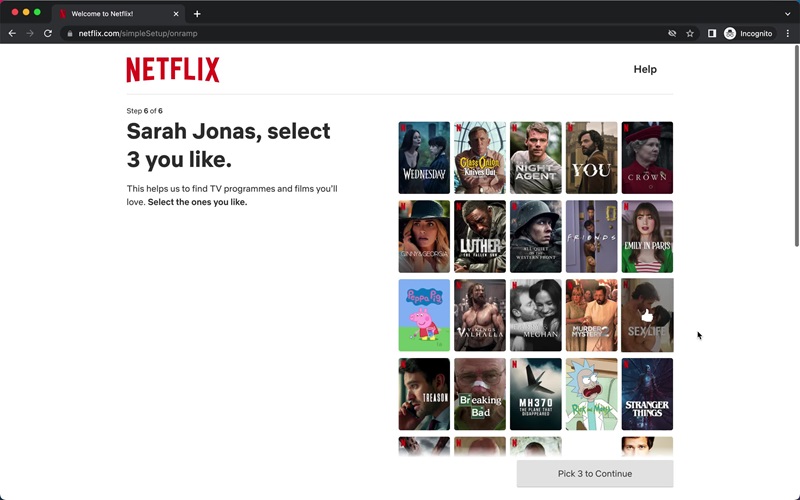
Such “funneling” creates a custom homepage for each user and builds long-term loyalty, as people feel the platform understands their taste. By constantly optimizing this funnel, Netflix ensures a seamless transition from interest to subscription.
Keyword Performance
Tracking your keyword rankings is essential for staying competitive in search results. Dig into your keyword performance by monitoring which pages rank well for a particular keyword and which are driving the most traffic and conversions. This data can help you refine your SEO strategy and identify opportunities for improvement.
Challenges in Using Data Analytics for Marketing
Data analytics can reap immense benefits for your business, but it also comes with a unique set of challenges. Let’s examine two of the most strenuous challenges and see how you can approach them for a successful analytics implementation.
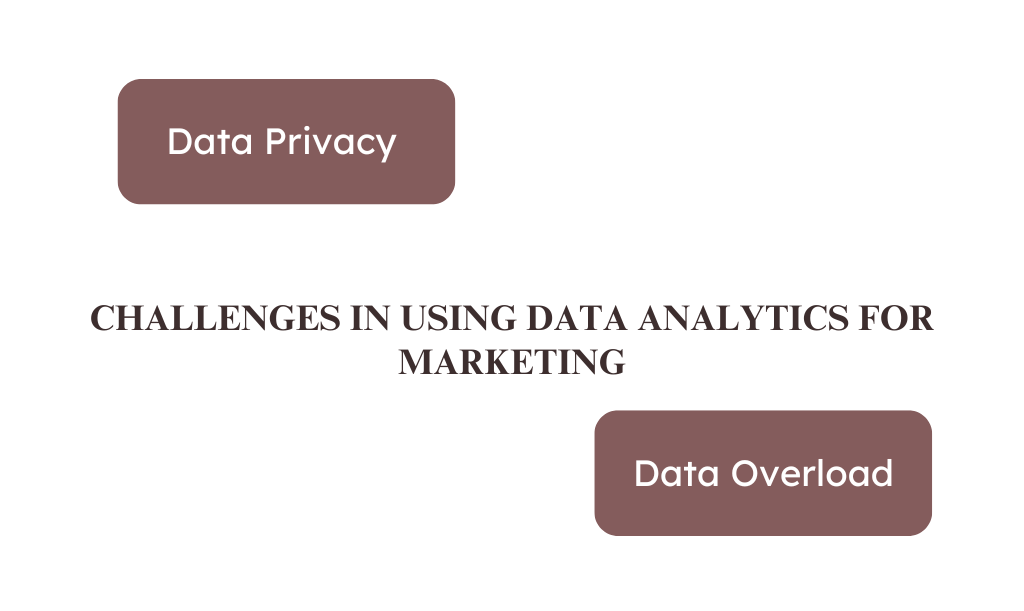
Data Privacy and Compliance
Adhering to regulations like GDPR and CCPA will help you to maintain customer trust. We have privacy laws for a reason, and respecting and protecting your customers’ data is crucial.
For example, when collecting user data for marketing purposes, you must ensure the person’s consent and secure storage practices. Once a data breach occurs, it can damage the customer’s trust and result in penalties for the company.
Data Overload and Selecting the Right Metrics
Racing after too many KPIs can ruin your efforts.
For instance, while page views can present a bigger picture of website traffic, they don’t necessarily correlate with conversions. Ensure you track metrics that align with your current business goals and objectives.
KPIs may vary depending on your business stage, industry, and objectives. For example, if you are in the early stages of product development, your focus might be on metrics like user engagement, retention rates, or conversion funnels. As your business evolves, you can shift your attention to more complex data loads.
Key Takeaways
- You shouldn’t ignore data analysis if you want to outperform competitors and scale your business processes.
- Improve personalization and ROI through customer segmentation and real-time campaign optimization based on live performance data.
- Learn insightful lessons about sentiment analysis and email marketing from globally renowned companies.
Data overload and privacy concerns can pose challenges, but you should focus on relevant KPIs and ethical data practices to ensure impactful analytics adoption. Data analytics in digital marketing is a complex yet rewarding process, and having the right expertise can make all the difference.
Partnering with a Google Premier Partner digital marketing agency like Andava Digital provides businesses like yours with access to invaluable resources to navigate these and other challenges.